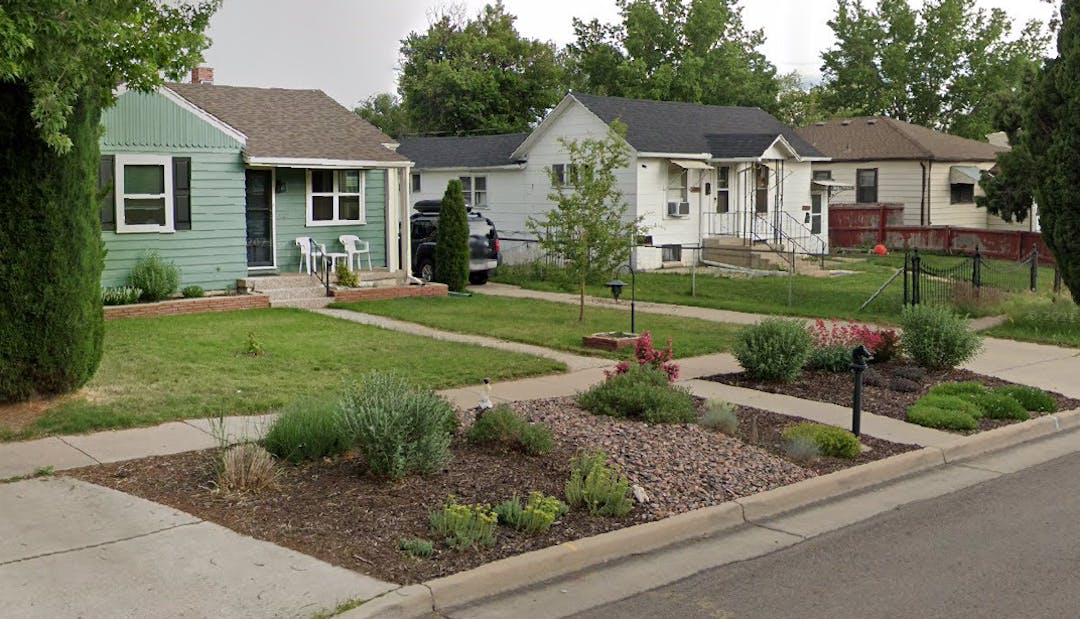What will be included in the new landscape code?
In addition to reducing landscape water demand in new development and redevelopment, the proposed landscape code will serve to improve the visual quality of Edgewater’s landscapes, reduce stormwater runoff, expand the City’s tree canopy and reduce urban heat island impacts, create green space essential for community health and well-being and promote biodiversity and pollinator habitat.
The proposed landscape code will not apply to existing landscapes in Edgewater. The code is applicable to all new residential, mixed-use, commercial, civic and institutional primary structures, as well as new or expanded parking lots. Only redevelopment that involves replacing an entire structure or the expansion of a building’s footprint by more than 500 square feet will be required to comply with the ordinance.
The code is organized into different sections that pertain to different property and development types in Edgewater. These sections currently include:
General Landscaping Standards
Required Landscaping & Irrigation for Single-Family & Two-Family Residential
Required Irrigation for all Non-Single Family and Two-Family Residential
Required Landscaping for Multi-Family Properties
Required Landscaping for Parking Lots
Required Landscaping for Streetscapes, Medians, and Rights-of-Way
Landscape & Irrigation Design Plan
Landscape Maintenance
Definitions
The General Landscaping Standards section includes - but is not limited to - the following proposed standards for all property types:
Plant material quality, installation and sizing standards
Plants must be hydrozoned, grouped together by water demand for effective irrigation
25% of total landscaped area must be low or very low water use plants
Soil amendment and mulch must be added to the landscape
No artificial plant or turf materials are allowed
1 tree must be planted for every 1,500 sq ft of landscape area
Living plant material standards are one important component included in the code which requires a certain percentage of the total landscaped area to be covered in living plants, at maturity. Living plants can improve the visual quality of landscapes, reduce urban heat island effects, increase stormwater infiltration and provide pollinator habitat. The proposed code requirements are:
Single-Family & Two-Family Residential
Multi-Family, Commercial, Civic, Institutional
Streetscapes, Medians, Rights-of-Way
Cool season turf limits are another component of the code that limits the amount of high water use, cool season turfgrass lawns - like Kentucky Bluegrass - installed in new development. Cool season turf uses the majority of the water applied to landscapes in Colorado and limiting its installation to areas that serve a functional purpose is an effective way to reduce landscape water demand. Please take the survey below to share your perspective on turfgrass limits in Edgewater. The proposed code requirements are:
General Standards (for all development types)
No cool season turf or overhead irrigation in areas less than 8ft
Not permitted in areas with slopes greater than 25%
Preferred, low water turf species provided in the code
Single-Family, Two-Family & Multi-Family Residential
Commercial, Civic & Institutional, Parking Lots, Streetscapes, Medians & ROWs
The proposed code also includes irrigation efficiency standards. These standards are limited for single-family and two-family residential properties, acknowledging that some of these projects will be undertaken by homeowners. The standards are more robust for other properties types, anticipating that these projects will be undertaken by landscape and irrigation professionals. The proposed code requirements are:
Single-Family & Two Family Residential
Multi-Family, Commercial, Civic and Institutional Properties
Smart irrigation controllers required
Master shut-off valves and flow sensors required
Designed to prevent runoff, low head drainage, overspray
6” min. pop up height in turf areas for spray heads and rotors
And additional irrigation efficiency best practices
Water Wise Landscaping Code Development
The Edgewater Sustainability Plan sets goals to save and protect Edgewater's water for our current and future residents. In January, 2023, Edgewater City Council set out to make this goal a priority for 2023 by looking at opportunities to reduce water use in Edgewater.
Outdoor watering during summer months (May - October) is one of the largest uses of water in Edgewater. One way to reduce water use is to reduce the demand for outdoor watering in landscapes by encouraging and/or requiring sustainable landscaping practices for new and redevelopment projects.
Aside from these programs, the city has very few landscaping regulations in place for new buildings which is uncommon for a city. Creating sustainable landscaping standards, sometimes known as Water Wise Landscaping standards, is an impactful way to further reduce outdoor water use in Edgewater and preserve our water as a resource for future generations.
Colorado is a dry state, averaging only 15 inches of precipitation each year. As this climate warms and we continue to experience drought, water conservation has become more and more important. According to the 2023 Colorado Water Plan, if nothing changes, Colorado communities may need 230,000-740,000 more acre-feet of water each year by 2050. That's as many as 241 Billion gallons of water needed each year. Local water conservation efforts, such as creating Water Wise Landscaping Codes, have the potential to help reduce these future needs by up to 97 billion gallons per year while also creating lush and colorful landscapes that still help to reduce urban heat island effects.



